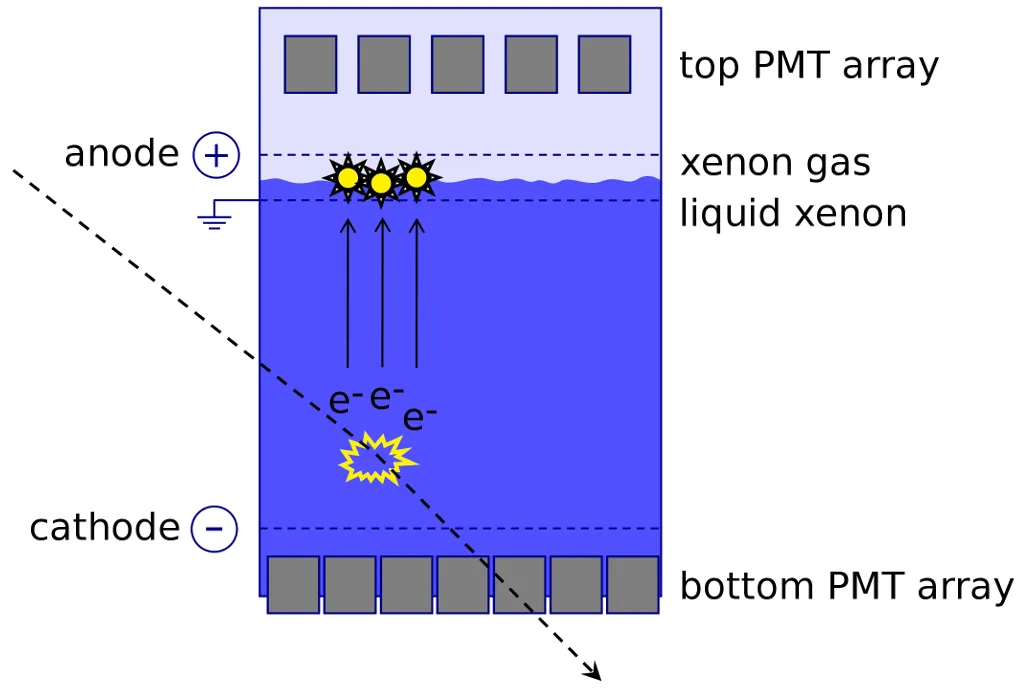 Image by Gerd Altmann from Pixabay
Image by Gerd Altmann from PixabayPrologue
 Image by Lou Blazquez from Pixabay
Image by Lou Blazquez from PixabaySomething is captivating about scientific discovery. The unspoken race to be first. Physicists pour their life, time, and energy to study the laws that govern reality. They endlessly toil through notes, theories, and experiments to understand anything that helps to explain the world around them. There appears to be a need not just to be the first discoverer of a thing, but also to be beyond reproach about it.
The realm of dark matter research is no different. Science must know what dark matter consists of and dedicate their lives accordingly. They will either find its components or determine the path they are on will not lead them to that finding. The goal appears altruistic: they sacrifice their resources to fail and then report upon it, so others don't fall into the trap.
Introduction
 Image by pixel1 from Pixabay
Image by pixel1 from PixabayWelcome, fellow sentient beings, to our report on all things STEM-related. We present to you STEM Article #1 - the presentation of a dark matter experiment that revealed an unexpected signal.
Experimental results aren't the end-all-be-all of a hypothesis. They only test for a narrow-range of findings lest the length of the research becomes unmanageable. However, sometimes the results of experiments reveal an outcome that could be revolutionary.
What is Dark Matter?
 Image by Gerd Altmann from Pixabay
Image by Gerd Altmann from PixabayVisible matter observed throughout the cosmos by human technology makes up only a small fraction of known universe. During observations of single galaxies, physicist Fritz Zwicky in 1933 held that "single galaxies were moving too fast for the cluster to remain bound together." The amount of visible matter, as presented in his research, amounted to a measure of mass that couldn't have enough gravity to keep that galaxy bound. Zwicky held that something else acted to maintain sufficient gravity for the galaxy's movement speed and coined the phrase "dark matter." Something was responsible for this observation, and science could not see it.
Decades later, during the 70s, Vera Rubin confirmed Zwicky's results, but the astronomical society largely shunned her results at that time. While today's astronomical society ascribes the discovery of dark matter to Vera, she has yet to receive a Nobel prize for her efforts. Despite this issue, however, scientists have spent decades trying to discover the particles that make up dark matter. Scientists now conducted experiments of more significant and higher sensitivities to try and capture the elusive dark matter particles. The XENON1T test is just one example of humanity's efforts to shed light on this mysterious topic.
The XENON1T Experiment
 UC San Diego News Center
UC San Diego News CenterWhy Xenon?
Xenon, as a noble gas, is not reactive with other elements. It has a nucleus size that scientists prefer for the interactions necessary for detection in the XENON1T experiment. The boiling point of Xenon is approximately -108 degrees Celcius. The XENON1T experiment maintains the enormous volume of liquid Xenon at about -95 degrees Celcius.
Xenon is not an easy gas to extract from the atmosphere. It makes up approximately 0.00001% of the Earth's atmosphere and can cost upwards of about $100,000 per bottle of Xenon gas utilized in experiments like XENON1T. Future dark matter experiments will use ever-increasing volumes of Xenon. Japan's XMASS direct dark matter experiment, for instance, plans on utilizing up to 20-tons of liquid Xenon.
How does the experiment work?
 Xenon Detection Principle
Xenon Detection Principle The XENON1T experiment is located almost 1-mile underground at the Gran Sasso National Lab in Italy. A total of 3.2 tons of ultra-pure liquid Xenon fills the chamber and houses the specialized detector.
The detector system is so sensitive that it can measure the decay rate of Xenon-124. Xenon-124 is an isotope of Xenon with a half-life older than the known age of this universe. Scientists estimate the age of the universe is approximately 14 billion years old. The half-life of Xenon-124 is 18 sextillion years.
While scientists mean to utilize the detector to identify dark matter particles, it is certainly able to measure other things as a result of particle interaction with the stable electron field inside.
The experiment works through particle interaction with the liquid xenon atoms. Particles interacting with the Xenon nucleus produces two signals-one is immediate and the other delayed. The detection system analyzes these two signals to determine the energy and position of the interaction, as well as, the type of particle that interacted with the liquid Xenon.
XENON1T Experimental Results
Once scientists had all systems set up, they let the detector run and record the interactions over two years between 2016 and 2018. No human observations were made during the detection process to eliminate the potential adverse impact of human behavior.
Scientists estimated the number of interactions could occur with the detector. They expected a total of 232 interactions, but they realized 285 interactions occurred.
Several theories explain the causes of the excess interactions, and you can best summarize them as tritium contamination, human error, or the interaction of a never-before-seen particle. It will take some years to validate the results and determine the most likely cause of the excess signals noted. However, the years might be worth it.
One potential discovery of this experiment is the presence of Axions. Axions particles theorized to exist that would resolve the charged-parity symmetry issue observed between weak and strong nuclear forces.
Conclusion
The XENON1T experiment is just one type of method utilized to determine what dark matter isn't. Understand that the search for dark matter required decades of careful speculation to theorize what would and wouldn't work, followed by experimentation to determine what could, or could not, be verified. Science had to create new forms of technology as they sought to understand the composition of the universe.
What can Society Do?
 Image by Gerd Altmann from Pixabay
Image by Gerd Altmann from PixabayRespect one another. Learn from each other. Inhale and exhale during a frustrating event. Anger during discussions never ends well and usually leads to violent acts. Take care of yourself, both physically and mentally.
Projects and research in science propel humanity onward. It's essential to continue research like this to further our understanding of the unknown.
Dark Matter in Review
 Image by wal_172619 from Pixabay
Image by wal_172619 from PixabayResearch takes time. The validation of research results takes even longer. In a world that seeks to experiment upon, understand, and catalog the unknown, we find physicists that will spend years ensuring the results of their experiment either confirms or refutes their beliefs. There is a great deal of respect to be had for such a drive.
In Closing

Image by Gerd Altmann from Pixabay
Thank you for joining me in this discussion. I'm not a physicist or researcher, but I find the prospects of our society discovering something unknown exciting.
Your thoughts?

Image by Free-Photos from Pixabay
How do you feel about the information presented today? Do you have any stories to share? Please share it with us in the comments below or recommend it for my next article!
Related Posts
Faith in Humanity
| Faith in Humanity #1 | Faith in Humanity #2 | Evil of Indifference | Dying of the Light | Gentle into that Good Night |
|---|---|---|---|---|
 |  |  |  |  |
Environmental Impacts
| A Journey | Volcanoes | Mercury | Wildfire |
|
|
|
|
| Inferno | Climate Change | Black Gold | Smartphones |
|
|
|
|
Energy
| Energy Overview | Coal | Nuclear | Solar |
|
|
|
|
| Hydroelectric | Wind | Geothermal | Biomass |
|
|
|
|
| Natural Gas | |||
|

















